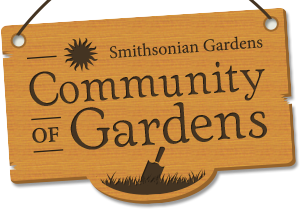Cairo Bend Road Garden
Description
In the 1960s I learned everything I needed to know about gardening and cooking from one of the original organic gardeners and foodies: my grandmother. After World War II she noticed that it was hard to get good produce anymore; the peddlers who used to sell door-to-door didn't come around any more. So she bought about sixty acres outside her town of Lebanon, Tennessee. It had a farmhouse on it, but because her husband was one of the two town doctors, they lived in town near the hospital. She never got to live at her farm although she always wished she could.She began subscribing to Organic Gardening and Farming, as it was then called, almost from the first issue. I remember sitting in her kitchen listening to her explain why artificial fertilizers were bad for the soil micro-organisms. She taught me all this while also teaching me how to make corn fritters, fried green tomatoes, and all the other treats that came out of her kitchen.
Her garden at the farm was huge. She had a tenant man who lived there and did some of the work, but she went to the farm every day and hoed in the garden, dressed in her handmade skirt and blouse (with all the foundation garments of the early 1960s underneath). She planted dwarf fruit trees, and raised hogs and chickens. She cured country hams in a smokehouse behind her back kitchen door in town, so she could feed the little fires all day long in the smoke house.
My grandfather had a small twenty-bed hospital in Lebanon, and she was in charge of the food for the patients. There was a big kitchen in the basement of the hospital, and on the way to or from the farm, we stopped by there to talk to the women who cooked the food. It had to be the best hospital food in the history of the world, especially in summer, when she brought big white oak baskets full of vine-ripe tomatoes to the kitchen, and cantaloupes that grew beautifully on her fast-draining, rich soil. I remember how excited she was when the first "ice-box" watermelons came out, the small ones that could fit easily in the refrigerator. Sometimes on Sunday afternoon we got to eat lunch in a little dining hall in the basement of the hospital. I could have as many cantaloupes as I wanted!
The same was true at breakfast at her house. I remember eating the cantaloupes down to the rind, and then she would say, "You don't have to scrape away at the rind like that. You can have another one!" There was an unlimited supply. (The secret was planting them in a little plot where the pigs had been for a few months.) The tomato juice was thick; she had canned it the summer before. The cherry jam was dark, almost brown, with candied cherries in it, perched on my piece of toast. My grandfather sat at the head of the table, grunting with pleasure as he put a piece of ham inside and biscuit, and then gave half of it to the dog. He never said anything at breakfast. There were just these little grunts. Nobody thought that it was bad for you to have a lot of bacon and eggs every day for breakfast. He smoked one cigarette at the end of the meal.
Of course, she canned and froze and preserved everything. She had three freezers on a converted porch behind the house, and shelves of canned tomatoes and jams. On Tuesdays, my grandfather drove to Nashville where we lived, carrying two big white oak baskets full of frozen meat, canned tomatoes and vegetable soup, and jam. My grandmother fed three households and a hospital with twenty patients from her small farm, with one helper.
Later, she bought the farm next to hers and expanded her operation considerably. Now she had more pasture and some large bottom-land fields. She started raising Charolais cattle, beautiful white animals, and more row crops like soy beans and corn.
When I got my own farm in the early 1980s, my grandmother was in her early 80s. I described my plans excitedly to her, and she said, "I wish I was young again!" She still had so many ideas about new things to try. Like Thomas Jefferson, though she was an old woman, she was yet a young gardener.
She died in the mid-1980s. I inherited some of her books about organic gardening and farming, classics of their time. I grow corn for cornmeal, winter squash, field peas, white potatoes, and sweet potatoes for calories, and lots of tasty vegetables to go alongside them, like tomatoes, peppers, green beans, and a lot of greens. I'm getting better at making jam. I don't feed thirty people, but I'm proud to be able to feed myself, and I think she would be proud of me. I'm still an organic gardener, and she would be so happy to see how her beliefs in organic gardening, which seemed weird and a bit cranky in the 1940s through the 1950s, are so mainstream now. She would also be thrilled by the local food movement. Our local food organization has a motto: "Middle Tennessee farmland once fed Nashville, and it will again."
I wish I could take her with me to Husk, the restaurant in Nashville where Sean Brock is celebrating the Southern country cuisine that she cooked every day in her kitchen.


